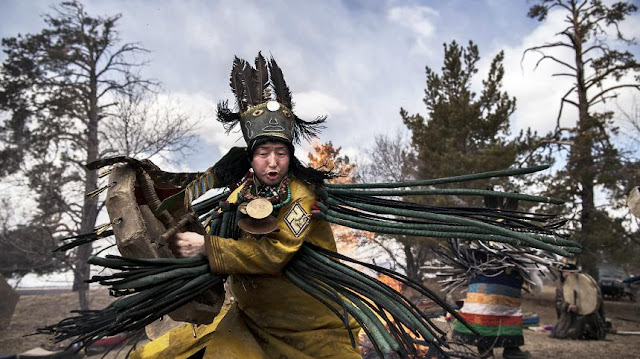Most Buddhists know Tara—simultaneously, a friend, savior, caring Bodhisattva and enlightened being.
She manifests in endless forms: she can be action-hero Green Tara who saves us from worldly harm; or blessed White Tara, who heals and brings longevity, to fierce protector Palden Lhamo, and she is also the great Wisdom Mother Prajnaparamita. Even though we honor her as the Great Mother Buddha, she is, without contradiction, an intimate and treasure friend.
The Vastness of Tara: Beyond Definition, Friend to Everyone
Do we really comprehend the vastness that is Tara? She is one of the most popular devotional and meditational deities, honored all around the world, practiced by all schools of Vajrayana Buddhism, many Mahayana Buddhists, Hindus, and others.
She is so popular, she is called “Mama Tara”—and She never takes Herself seriously. She’s a daily good friend, ready helper, saving hero, precious guide. She always has “time” for everyone—after all, time is relative. She is just as quick to help the prisoner in jail as the faithful practitioner, without discrimination. If Her name is called, She answers.
Yet, Tara goes beyond any constraints of conception, and even imagination: Parajnaparamita, wisdom Dakini Varjayogini, Female Buddha, Consort of great Amoghasiddhi Dhyani Buddha, Hindu great mother, angel to those in distress — all of these and thousands more. There are 21 famous Tara manifestations, one of which is the beloved White Tara. In Vajrayana’s higher tantras she is Chittimani Tara and also, Vajrayogini (Vajra Varahi).
It can be confusing, Her endless labels, but at the same time it defines Her perfection. She is known by endless names, but consistently as Tara, Arya Tara, and, in Tibetan, Jetsun Drolma. She is simultaneously the spiritual child of Avalokiteshvara, born of tears of compassion, and the Mother of the very same Buddha. Mother and child of the same Enlightened Being. Simply meditating on the vastness of these concepts is, in itself, challenging and rewarding.
Her Practice Is as Simple or Complex as Tara
As with Her vast array of names, appearances and roles, Her practice can be simple or profound. She responds well to just the calling of Her name. Or a simple thought. Her ten-syllable mantra, chanted millions of times each day around the world, is associated with everything from rescues to achieving Enlightenment.
Simplified Sadhanas for the devout include Green Tara and White Tara practices that can be practiced with or without empowerment. As a practitioner progresses, Tara meditations can become more intense, with Highest Yoga Tantra practices such as Chittamani Tara. Even the famous 21 Taras, can be practiced simply—as a daily verse—or at the ultimate level, with 21 separate sadhanas and mantra
She can be practiced in the form of the great Black Dakini, Throma Nagmo, the wrathful form of Prajnaparamita—a Highest Yoga Practice (mana annut tantra). She can be practiced even without a name, just by simply imagining Her. There is, literally, a Tara, and a Tara practice, for everyone.
Dana (Donations for our Buddhist research and development)
Do you earnestly cherish our devoted work? Assuming this is the case, we are delighted that you are finding our blog useful and valuable. Would you consider making a donation for our Buddhist research and development?
We need your help to secure the future of scholarly interaction with Buddhism. Since our very first publication of Dharma works and activities in the year 2008, we had been effortlessly providing free distribution of Dharma posts and articles throughout the previous 13 years. We have exceptionally constrained supports and do not receive subsidized or funding from people in general.
Please help us and to develop our Dharma activities that will not only benefit you, but to all Dharma readers on the planet. Please consider showing your support. Your generosity will certainly help us to enhance our work and to accomplish for a better and brighter prospect to come.
Thank you for reading, may you find peace and great bliss. With your support it helps to spread the Buddha’s precious teachings and turning the Dharma wheels in the world.
Aspiration For Bodhichitta
For those in whom the precious Bodhichitta has not arisen
May it arise and not decrease
But increase further and further.
Dedication of Merit
By this merit may we obtain omniscience then.
Having defeated the enemies wrong-doings.
May we liberate migratory from the ocean of existence.
With its stormy waves of birth, old age, sickness and death.
*Note
I do not own or infringe any copyright of the picture(s).
Picture(s) courtesy and credit to the rightful distributors and or studios.
Picture(s) is/are intended for editorial use only.












.jpg)














